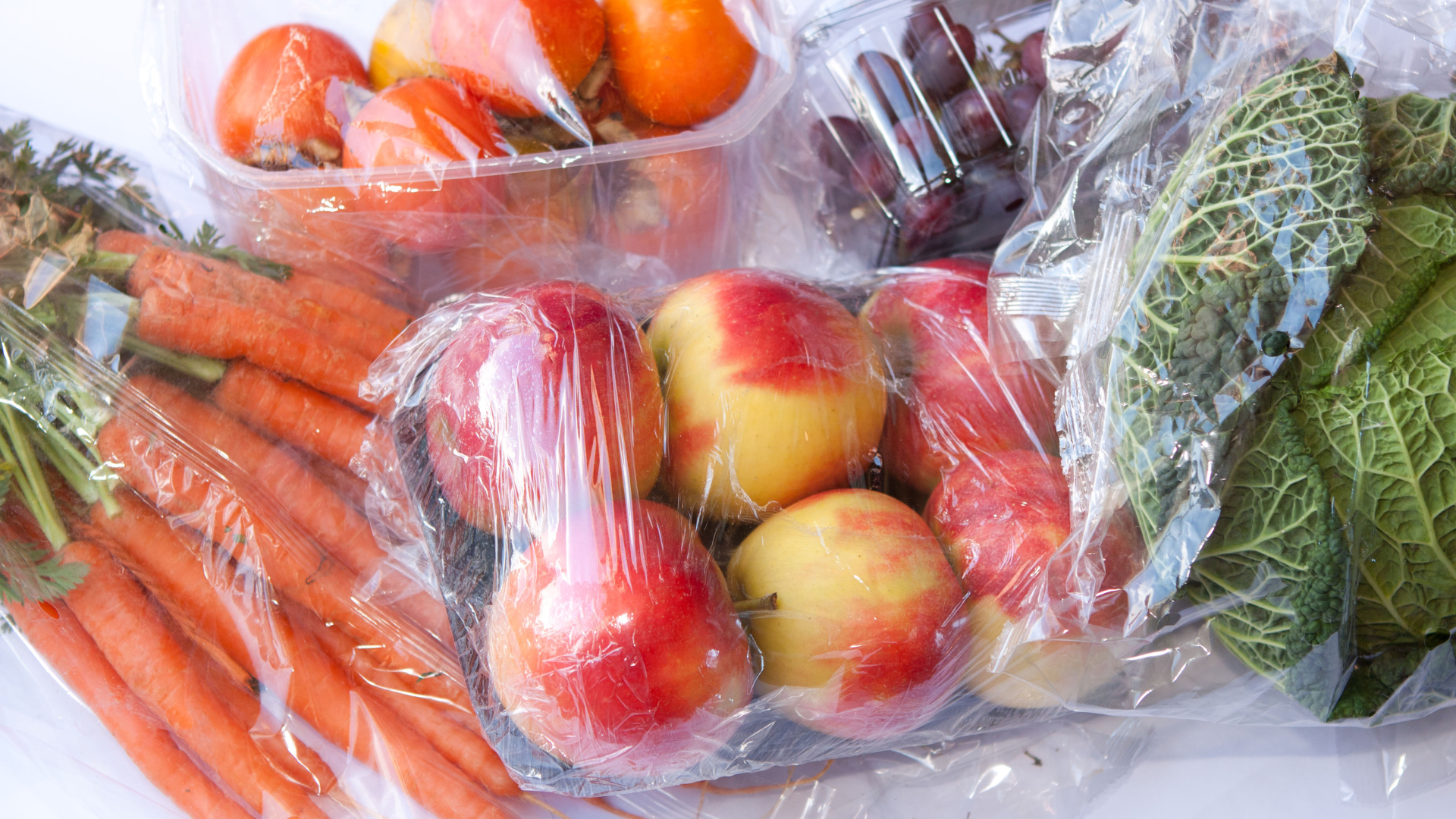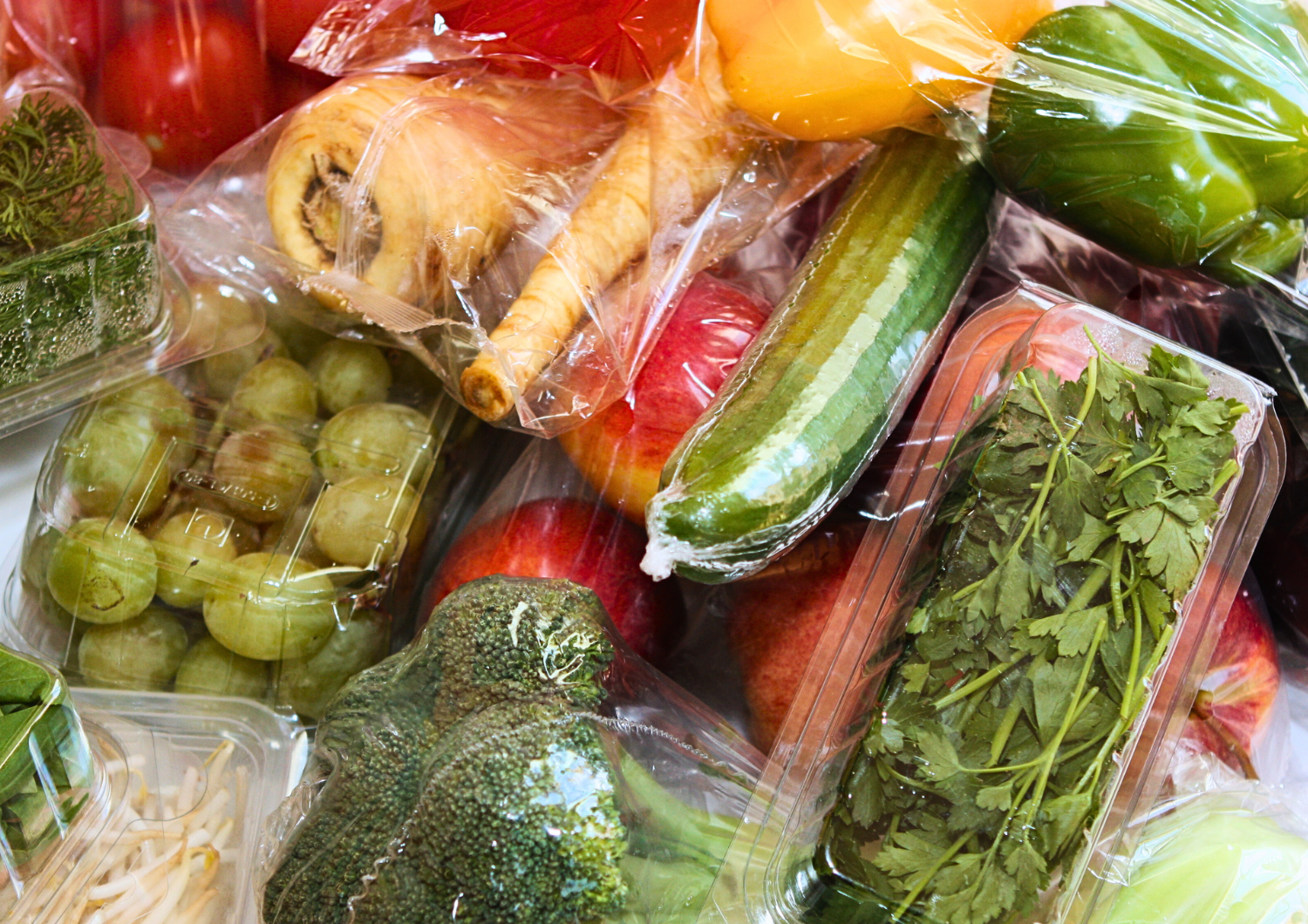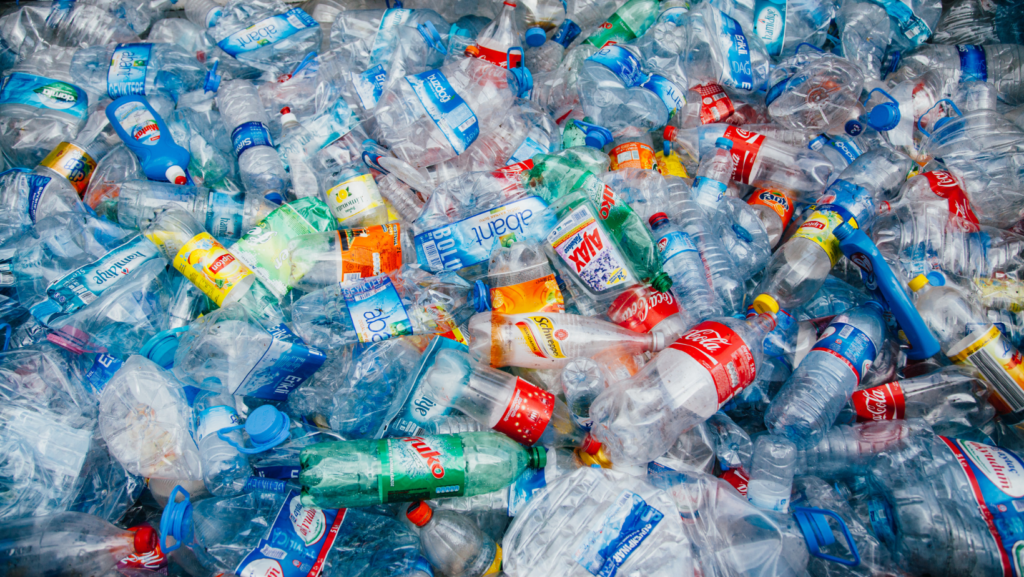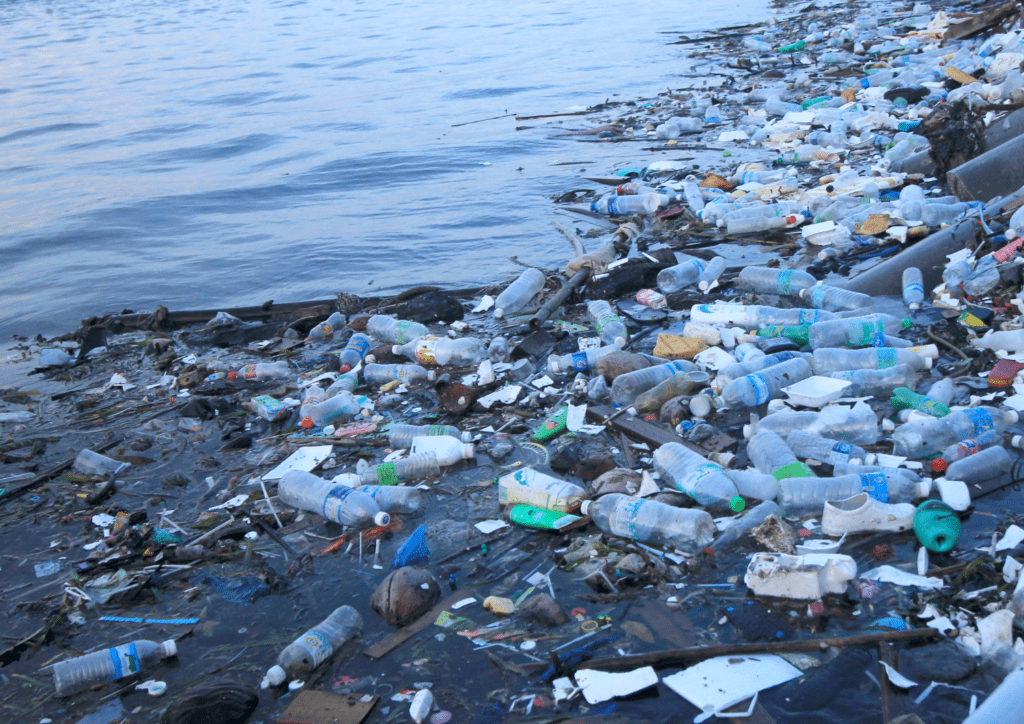It is fair to say that most food in the average Canadian grocery store is now wrapped in plastic. When Environmental Defence surveyed key shelves in the country’s major grocery chains two years ago, we found an overwhelming amount of plastic – more than 70 per cent – on several key shelves. Shelves where food used to be mostly packaged in cans, jars or paper bags, like pet food, soups and baby food.

When we went back this summer, we found even more plastic on the baby food and soup shelves. In both surveys, we didn’t even bother looking at the meat and dairy cases, where almost all food has long been packaged in plastic.
Grocers like to say that plastic food packaging is environmentally friendly and prevents food waste. But the truth is MUCH more complicated. Nearly half of all food in Canada is wasted and one of the causes are high-volume “bulk” products offered in plastic packaging.
In our original grocery survey, we found that it’s often cheaper by weight to buy pre-packaged fruits and vegetables than buying them loose from a bin. The problem is, buying things pre-packaged means you often take home more than you will actually use, which just means you have to throw some out at home. This is a terrible use of plastic packaging. Because of the persistence of unnecessary plastic produce packaging, a UK organization recently called on their government to impose a ban on plastic wrapping for 21 fruits and vegetables sold in supermarkets.
What’s more, offering plastic-wrapped food that could be sold loose also contributes to plastic waste and can contaminate our food with microplastics and other harmful chemicals found in plastic.
Plastic is a chemical soup that almost exclusively comes from oil, gas or coal. Researchers have determined that thousands of chemicals are used in plastics. These chemicals can leach into our food, and our bodies from food packaging. While many have not even been tested for safety, others have been linked to hormone disruption, developmental delays and devastating illnesses.

We should not be exposing people – and certainly not babies and toddlers – to these chemicals simply because food manufacturers and grocery stores find them more convenient or profitable than the packaging they used to use. Glass jars, for example, are inert and can be washed out and refilled very safely.
Plastics and chemicals also pose significant hazards in the environment. And it’s not only the litter you can see with the naked eye. Another recent study looked at the impacts of microplastics and “forever” chemicals (per- and poly-fluoronated alkyl substances, or PFAS) on the environment. Together, this combination – which is now pervasive in water bodies around the world – caused harm to daphnia, an organism that is crucial to aquatic food webs.
There are alternatives to plastic food packaging that are better for the environment. The Canadian government has already proposed requirements for the country’s biggest grocery retailers to eliminate packaging for many fruits and vegetables and establish reuse and refill systems for containers for packaged foods. These major grocers certainly rake in more than enough profits for them to be able to invest in sustainable alternatives. And we know they have the market power to change their supply chains.

These big retailers are not doing enough to protect people in Canada and the environment from plastic food packaging. If they won’t do it voluntarily, then we have to make them. Join us in telling the government that you support requirements for the major grocery retailers to reduce plastic packaging and implement reuse systems.










